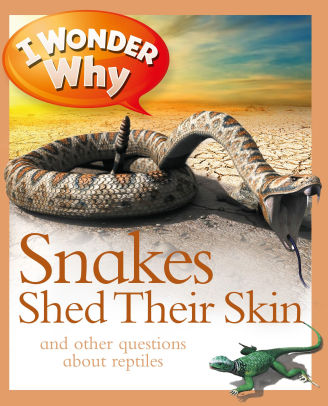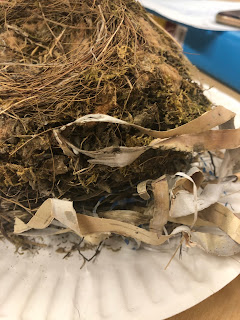Snake Skins, Butterflies, and Bird Nests,
Oh My!
You never know what children are going to find when you they are given time to explore outside. However, it is not only about what they find outside, it is what you do when they find it. Do you tell them to put it down and stop touching it or do you help them make discoveries about what they found? In this blog, I will give examples of ways that you can use natural materials that children discover as a teaching opportunity.
Snake Skins:
This is a BIG one because a lot of people are scared of snakes. However, when teaching children to make scientific discoveries, we MUST forget about our fears.




If the children in your class find a snake skin outside, they will have lots of questions. They will be curious about what it is, where it came from, how and why snakes shed their skin, etc. It is important that you provide them with the necessary resources to collect data about their finding.
Activity: Bring the snake skin inside and allow the children to look closely at it with magnifying glasses and talk about what they notice. Give the children time to have a conversation about their findings as new questions may arise.
Inquiry Activity:
Children may be curious about what other animals shed their skin In this case, you would ask them to think of ways to find the answer to this question. Assist children with their research in order to find answers to this questions.
Before researching this question, you could ask the children to help you sort a variety of animals into two categories "Sheds their skin" or "Does not shed their skin." This would serve as an assessment to see what they knew before. They could sort them again at the end to show what they learned.
This is a great video that children would enjoy watching:
Books:


Butterflies:
Children love to chase butterflies, but often butterflies fly away too quickly for children to get a close look. Below I have provided some ways for children to learn more about butterflies after they see them outside and wonder about them.
Activities:
*Allow the children to take photographs or videos of butterflies that they see
*Have the children create a nature journal where they can write and draw while they observe butterflies
*Butterfly kits are a great way for children to learn about the life cycle of butterflies as they observe the whole process. (Have the children make a video blog of the life cycle or make their own "Very Hungry Caterpillar Book" with pictures that they have taken.)

This video shows the documentation of a Monarch Butterfly's Life Cycle
<iframe width="512" height="376" src="https://player.pbs.org/viralplayer/2365869830/" frameborder="0" marginwidth="0" marginheight="0" scrolling="no" seamless allowfullscreen></iframe>

This video shows the documentation of a Monarch Butterfly's Life Cycle
<iframe width="512" height="376" src="https://player.pbs.org/viralplayer/2365869830/" frameborder="0" marginwidth="0" marginheight="0" scrolling="no" seamless allowfullscreen></iframe>
*Bring in pictures of butterflies or a personal collection to share with the children and allow them to share their findings with the class.
Birds Nests:
Activities:
If the children in your classroom find a nest with eggs, they could make a video blog of their observations of a nest that they found like the example below.
If the nest is abandoned, you can bring the nest inside and have them look closely at it with magnifying glasses. Using their discoveries and inquiries as teachable moments.
Example: If they notice plastic in the nest, they may wonder how it got in there or why the bird used it to make the nest. This could lead to research on the topic of pollution.
Activities:
If the children in your classroom find a nest with eggs, they could make a video blog of their observations of a nest that they found like the example below.
If the nest is abandoned, you can bring the nest inside and have them look closely at it with magnifying glasses. Using their discoveries and inquiries as teachable moments.
Example: If they notice plastic in the nest, they may wonder how it got in there or why the bird used it to make the nest. This could lead to research on the topic of pollution.









